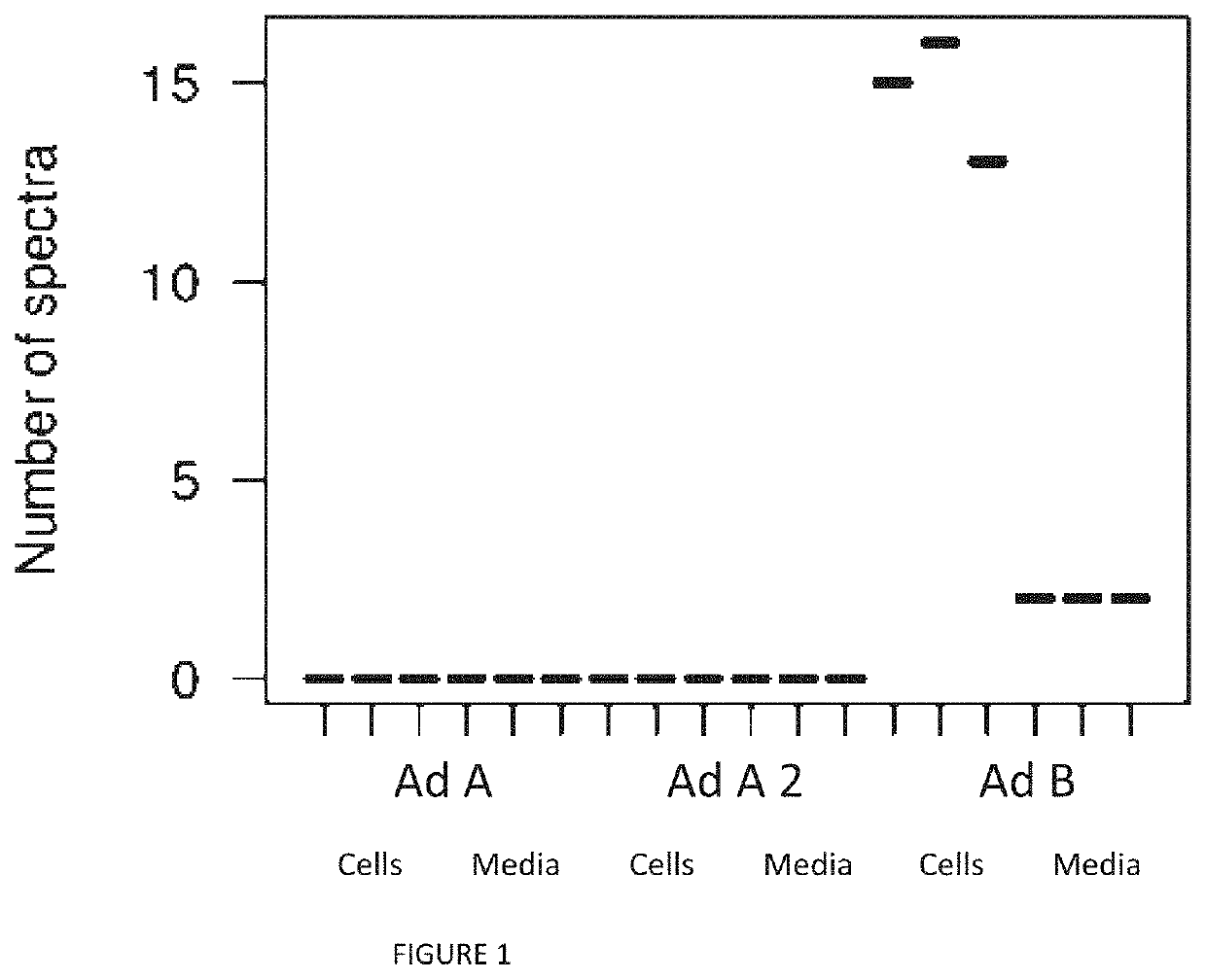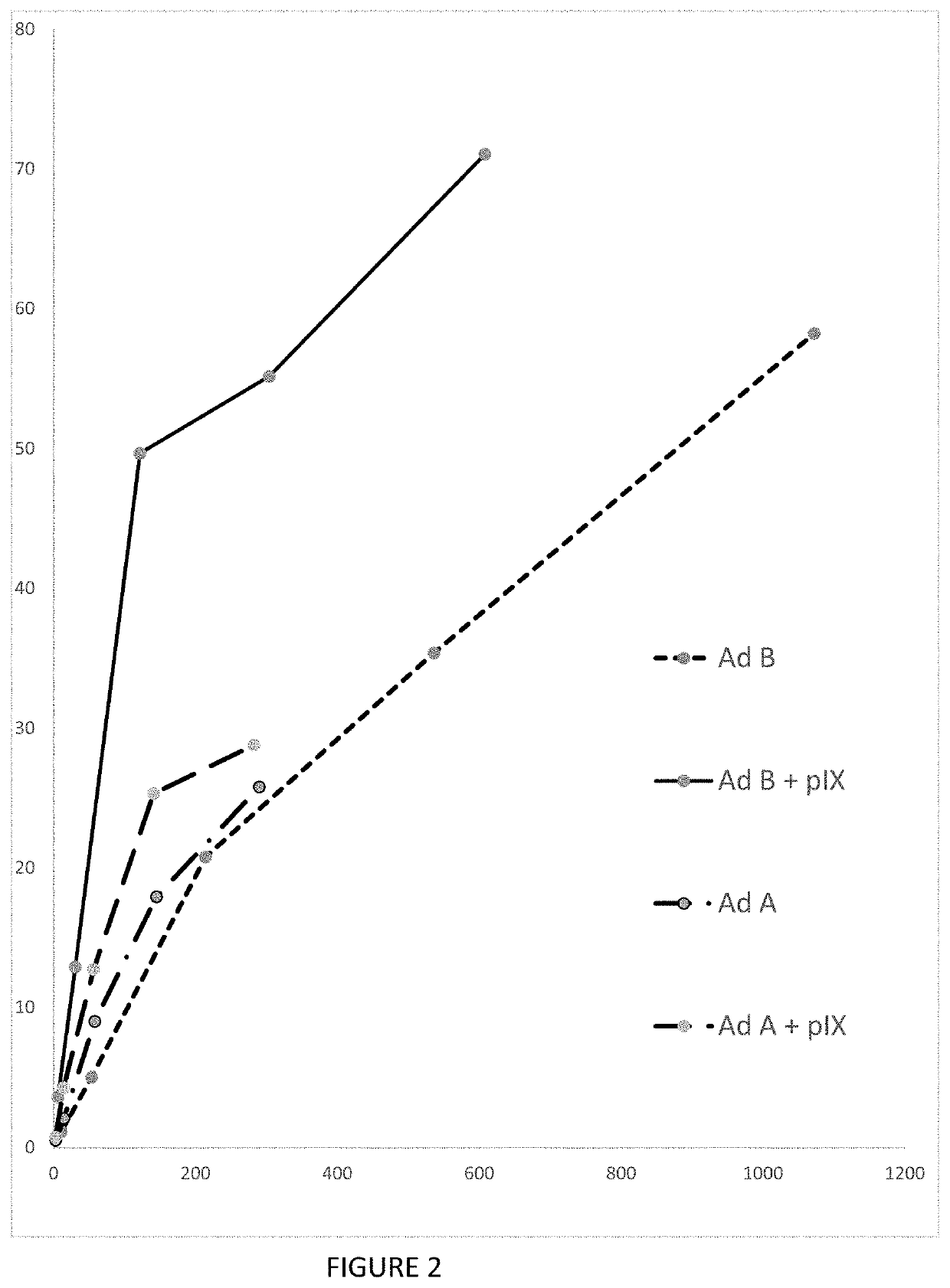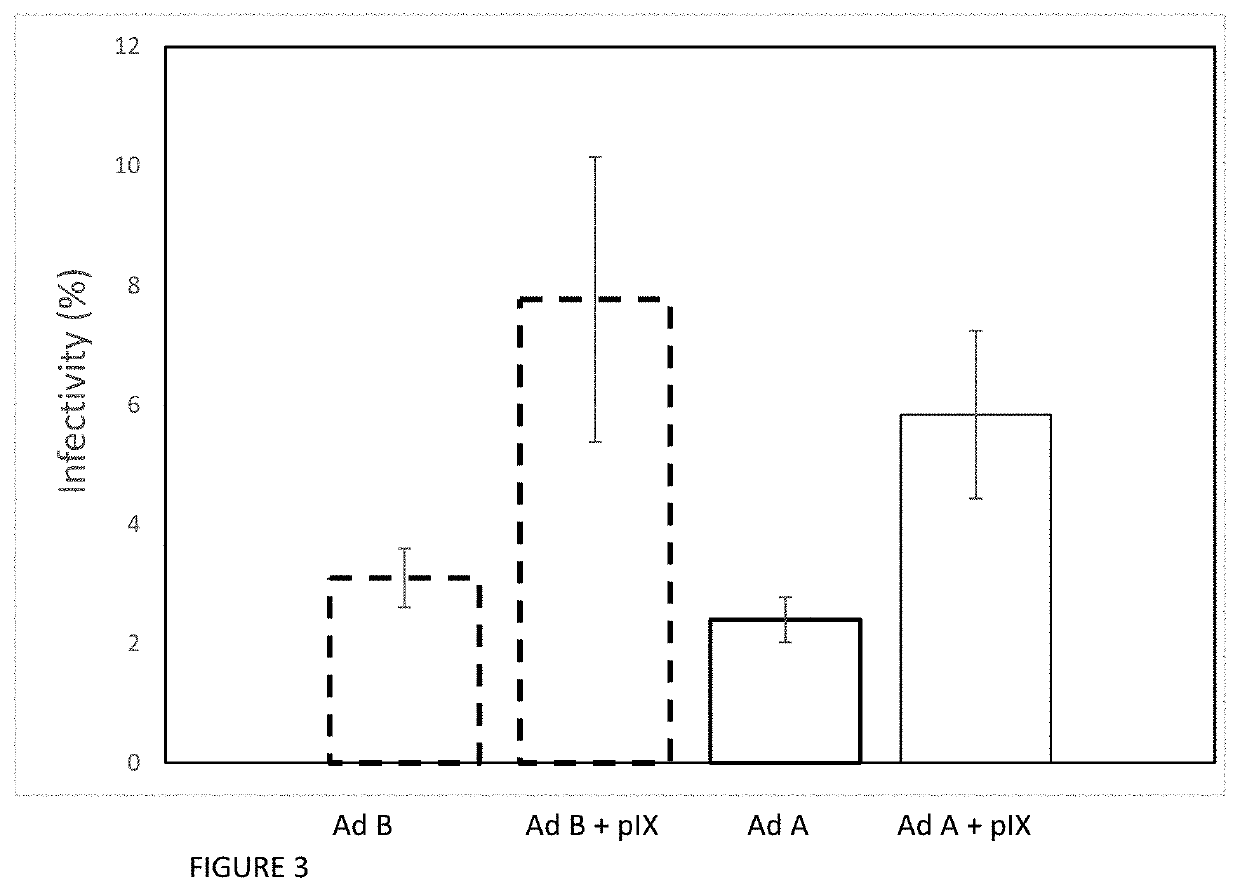Adenoviral Polypeptide IX Increases Adenoviral Gene Therapy Vector Productivity and Infectivity
a technology of adenovirus and polypeptide, which is applied in the field of adenovirus polypeptide ix to increase the productivity and infectivity of adenovirus gene therapy vector, can solve the problems of not being easily scalable into commercial manufacturing, and achieve the effects of improving the transduction kinetics of the resulting adenovirus vector, high yield and high yield
- Summary
- Abstract
- Description
- Claims
- Application Information
AI Technical Summary
Benefits of technology
Problems solved by technology
Method used
Image
Examples
example 1
lls Provide Complementation
[0028]The HEK293 cell line was established in 1973 by transforming human embryonic kidney (“HEK”) cells with sheared adenovirus type 5 DNA. A 4.5 kb piece of adenoviral DNA integrated into chromosome 19 of the HEK genome, creating the HEK293 cell line. The 4.5 kB piece of adenoviral DNA in the HEK293 genome contains the adenoviral genes e1a, e1b and ix. It represents about 11% of the far 5′ end of the adenovirus serotype 5 genome.
[0029]HEK293 cells include the adenoviral genes e1a, e1b and ix. Therefore, E1-deleted adenoviruses can grow in HEK293 cells but nor in normal human cells (which do not have adenoviral genes integrated into the chromosomal DNA). E1-deleted adenoviruses thus reduce the risk of forming infective (replication-competent) virus. The art refers to E1-deleted adenoviruses as “conditionally replicative,” meaning the virus is able to replicate only conditionally, i.e., in a host cell that provides the required complementation functions mis...
example 2
n Culture
[0037]We have done extensive process development work using single-use bioreactor systems. Over the course of five years, we made at least forty six (46) batches of adenovirus in single-use CultiBagRM™ bioreactors. The process included culturing of mammalian cell lines in roller bottles or shaker flasks, transfer of cells into a single-use bioreactor, expansion of the suspension-adapted cells in the bioreactor and infection to that the cells producerecombinant adenovirus. Virus material has been harvested by releasing intracellular viruses from the cells by chemical lysis followed by digestion of the host cell DNA with endonucleases. Resulting virus can be then subjected to downstream purification process. We have produced several recombinant adenoviruses, including adenovirus vectors where various parts of the early region of the genome have been deleted. On average, our HEK293 cells in suspension culture have produced about 3.16×104±2.61×103 viral particles / cell.
example 3
n vs Adherent Culture
[0038]We compared the productivity of suspension and adherent cell culture systems for manufacturing vector. To do this, we used a serotype 5 adenovirus. As with Example 1 above, we used a early-region deleted adenovirus, i.e., the viral genome was modified to delete the E1a, E1b and pIX regions at the 5′ end of the wild-type adenovirus genome, as described by Ahmed et al (2001). Our adenovirus thus had an E1a-, E1b- and pix-negative genome. The vector was constructed using standard DNA manipulation techniques, and the viral genome also incorporates also some adenovirus serotype 2 (“Ad2”) genetic sequences.
[0039]We compared manufacture of this vector in various suspension culture systems, using 1-5 L working volumes and several small-scale, MOI-varying tests in shaker flasks. Surprisingly—and frustratingly—we found that yield and productivity were markedly low in each of these batches. The maximum productivity was 6×103 vp / cell. This was an order of magnitude be...
PUM
| Property | Measurement | Unit |
|---|---|---|
| volumes | aaaaa | aaaaa |
| volume | aaaaa | aaaaa |
| volume | aaaaa | aaaaa |
Abstract
Description
Claims
Application Information
 Login to View More
Login to View More - R&D
- Intellectual Property
- Life Sciences
- Materials
- Tech Scout
- Unparalleled Data Quality
- Higher Quality Content
- 60% Fewer Hallucinations
Browse by: Latest US Patents, China's latest patents, Technical Efficacy Thesaurus, Application Domain, Technology Topic, Popular Technical Reports.
© 2025 PatSnap. All rights reserved.Legal|Privacy policy|Modern Slavery Act Transparency Statement|Sitemap|About US| Contact US: help@patsnap.com



